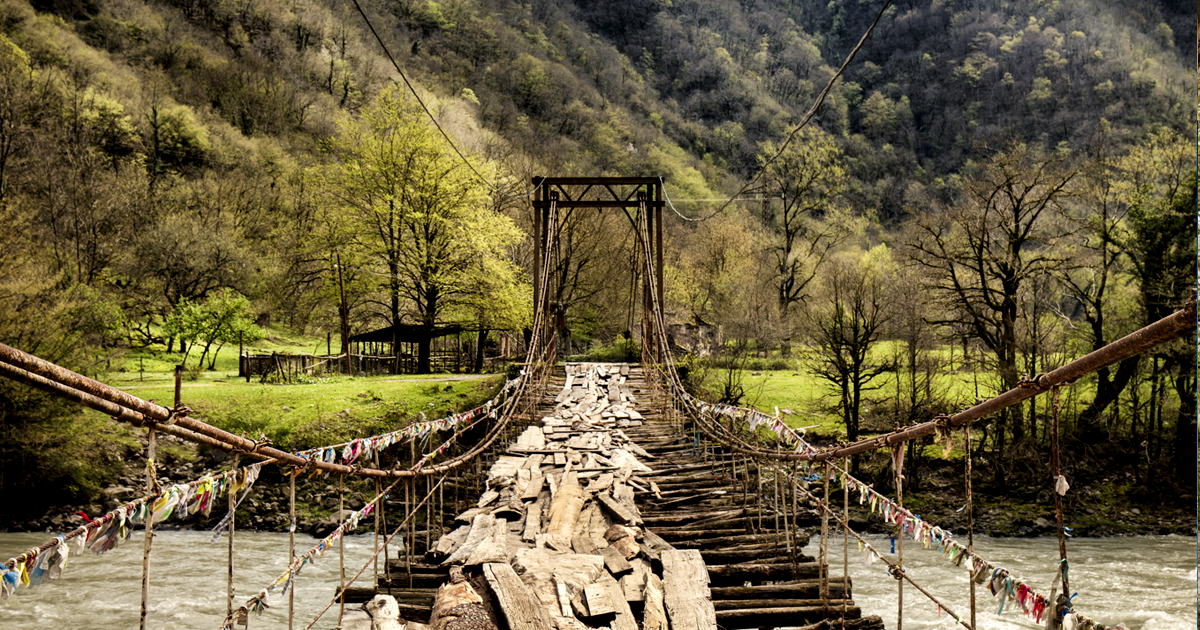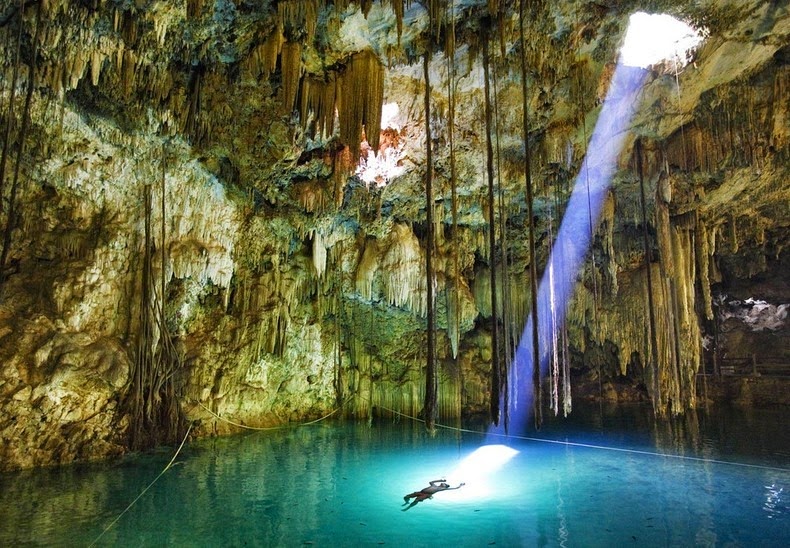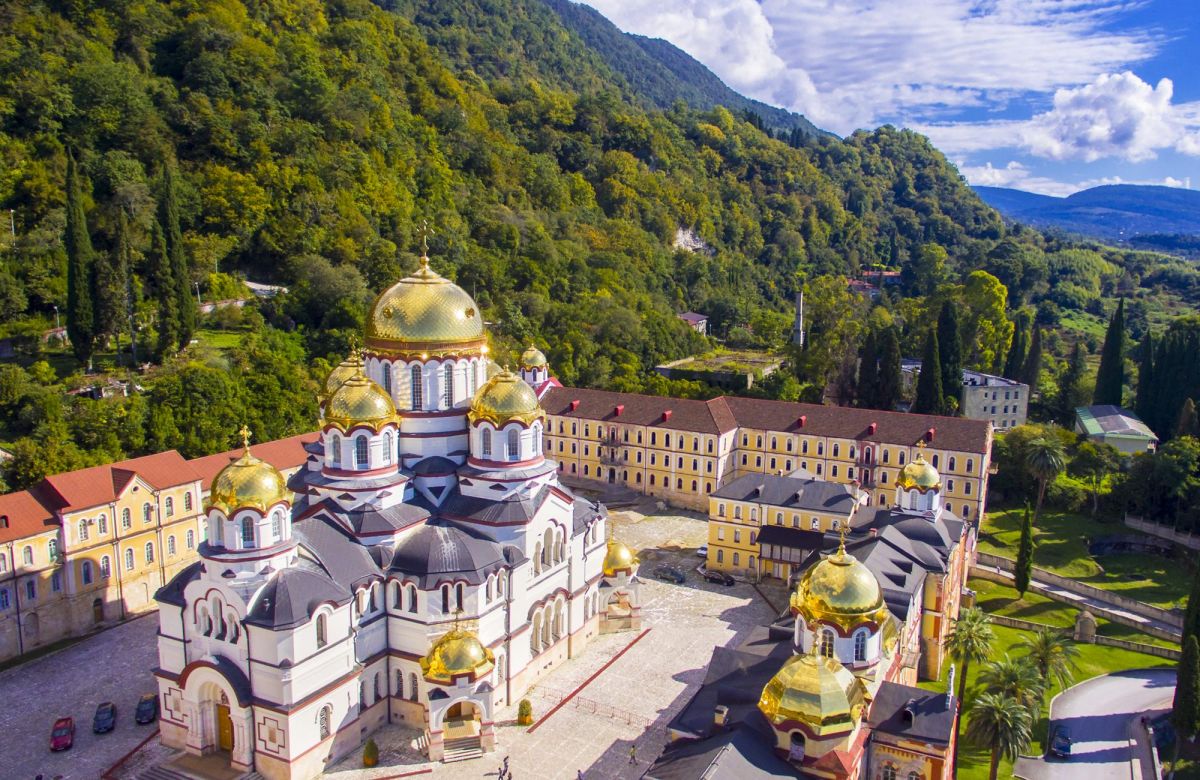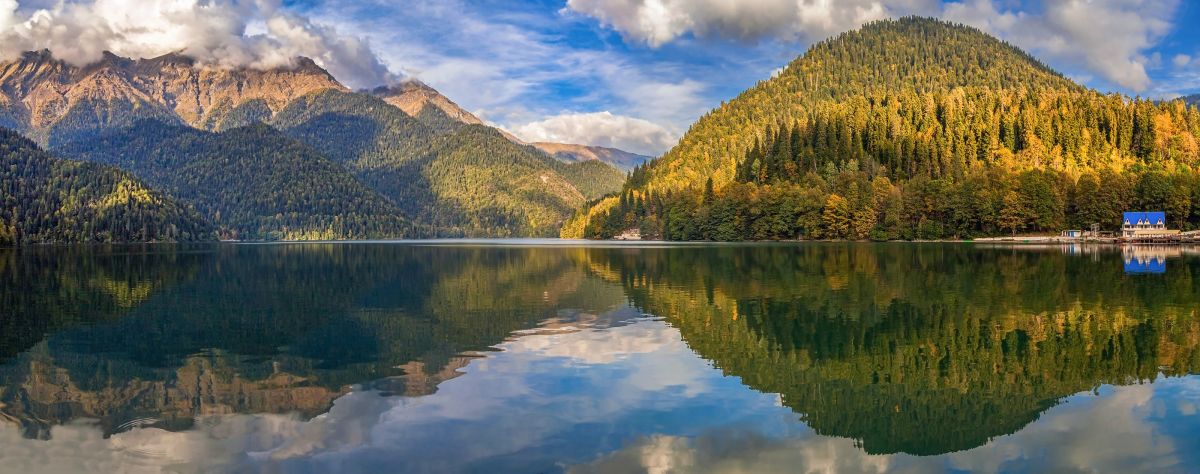



GEOGRAPHY
Diversity of the Abkhaz flora is caused by the difference of climatic conditions. There are more than 2,000 species of wild plants on the territory of the Republic, some of which have survived from pre-Ice Age.
The Republic of Abkhazia is located in the western part of the South Caucasus, between the rivers Psou and Ingur. In the North-East and North Abkhazia borders the Russian Federation. In the East, it borders with Georgia, in the South it is washed by the Black Sea. The coastline makes 240 km. The area of the land part of the territory of Abkhazia is 8.7 thousand square km.
Abkhazia is a mountainous country with a variety of climatic zones. About 70% of the territory is occupied by middle and high areas. The main ridge of the Greater Caucasus stretches along the northern border of Abkhazia, the height of which rises from the west to the east from 2500 up to 4000 meters above sea level.
Abkhazia is rich with the world's deepest caves - Krubera Cave (-2196 m)( is the second deepest known cave on Earth after the Veryovkina Cave. It is located in Gagra, Abkhazia) , Sarma (-1830), Snezhnaya-Mezhennaya (-1753 m). New Athon’s cave complex is equipped for visits and is the most famous among tourists.
The coastal climate of Abkhazia is humid subtropical and is under the smoothing effect of the Black Sea. The average annual rainfall is 1550 mm, the average relative humidity is 72%, and the number of hours of sunshine per year is 2238.
Thanks to the numerous rivers, lakes, swamps, glaciers, Abkhazia is considered to be one of the most flooded areas of the planet. All the rivers feed the Black Sea, are mountainous and have a mixed feeding (glacier, snow, rain and groundwater). The largest rivers of Abkhazia are: Bzyb, Kodor, Gumista, Kelasur. The total annual flow of all rivers of Abkhazia is about 13 km3 of clean water. There are more than 130 lakes on the territory of Abkhazia, in the recesses of a complex mountain relief. The pearl of the mountainous Caucasus is believed to be picturesque Lake Riza.
The varied terrain and landscapes of Abkhazia create a wide range of environmental conditions and a high level of biological diversity.
Abkhazia has a significant forest resources. They occupy more than 52% of the territory of the Republic, of which more than 12% make forests of conservation area.
The fauna of Abkhazia is rich and diverse. More than 450 species of vertebrates, representing 1% of the world's fauna is concentrated here.
Marine fauna is also very rich, including more than hundred fish species, spiny dogfish, skate, mullet, flounder, mullet, mackerel, herring, anchovy, and in fresh water: carp, chub, barbell, catfish, pike and many others. The Mountain Rivers are rich with trout. Black Sea salmon spawns here as well as sturgeon and beluga.
The country has recorded 305 species of birds, among them rare ones, having the international status of protected species: the golden eagle, the bearded, griffon vulture, Caucasian snowcock, Caucasian black grouse, owl and many others. Eastern Black Sea migratory birds flow is held through the territory of Abkhazia - one of the largest in the Euro-Asian continent. Hundreds of millions of birds are flying over Abkhazia, (over 200 species) every year during the season. Many of them mainly concentrate on the coast and lowlands, providing these places the status of Important Bird Areas of international importance
Mountains and foothills of the Republic are inhabited by many different animals: tour, chamois, roe deer, Caucasian deer, wild boar, bear, fox, jackal, lynx, wild cat, marten, badger and weasel. In the sea one can regularly see 3 species of dolphins: common dolphins, bottlenose dolphin and harbor porpoise. All kinds of dolphins are under state protection.
Preservation of unique natural landscapes and the whole complex of biological diversity is one of the priorities of the state. The network of protected areas includes more than 12% of Abkhazia's Square. These include Ritsa National Park, the area of which is 400 km2, Pitsunda-Myussera and Pskhu-Gumista reserves.
A system of state environmental agencies is formed in Abkhazia. Public environmental and conservation organizations are actively functioning in the state. .
Rich reserves of fish, oil reserves, the highest point - 4046m, Forests, Caves












